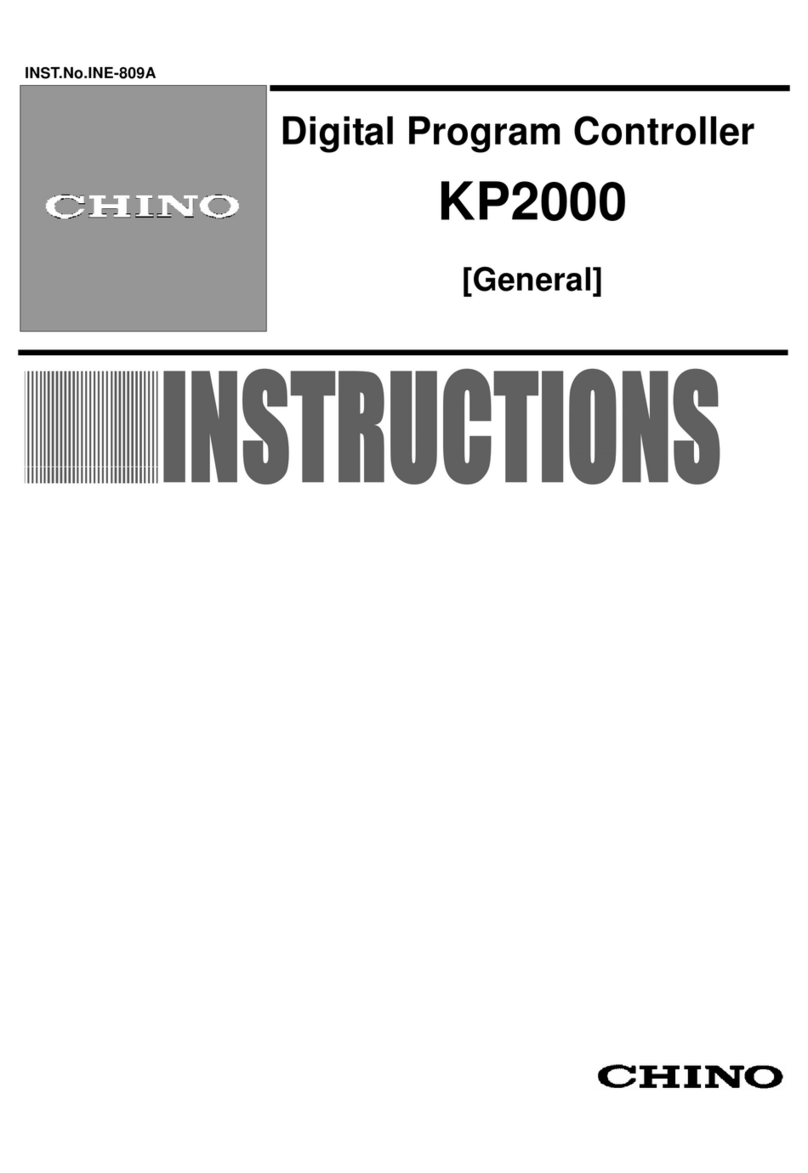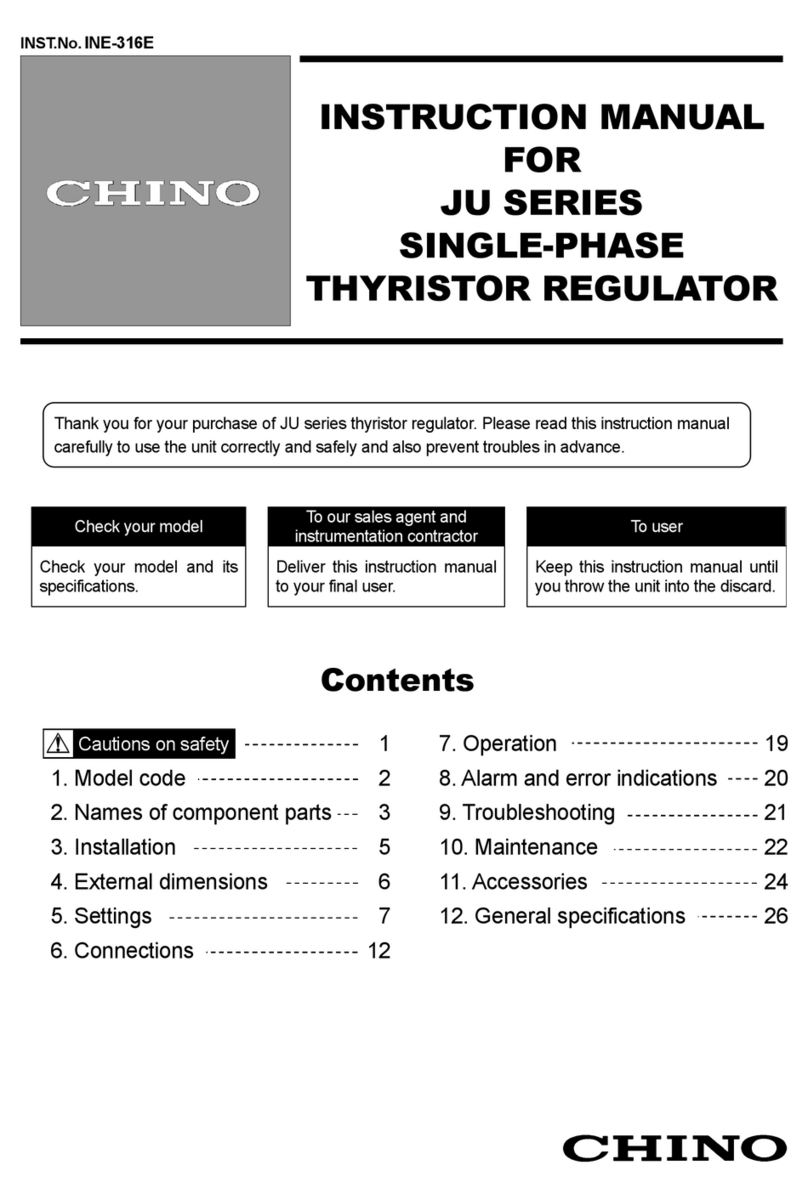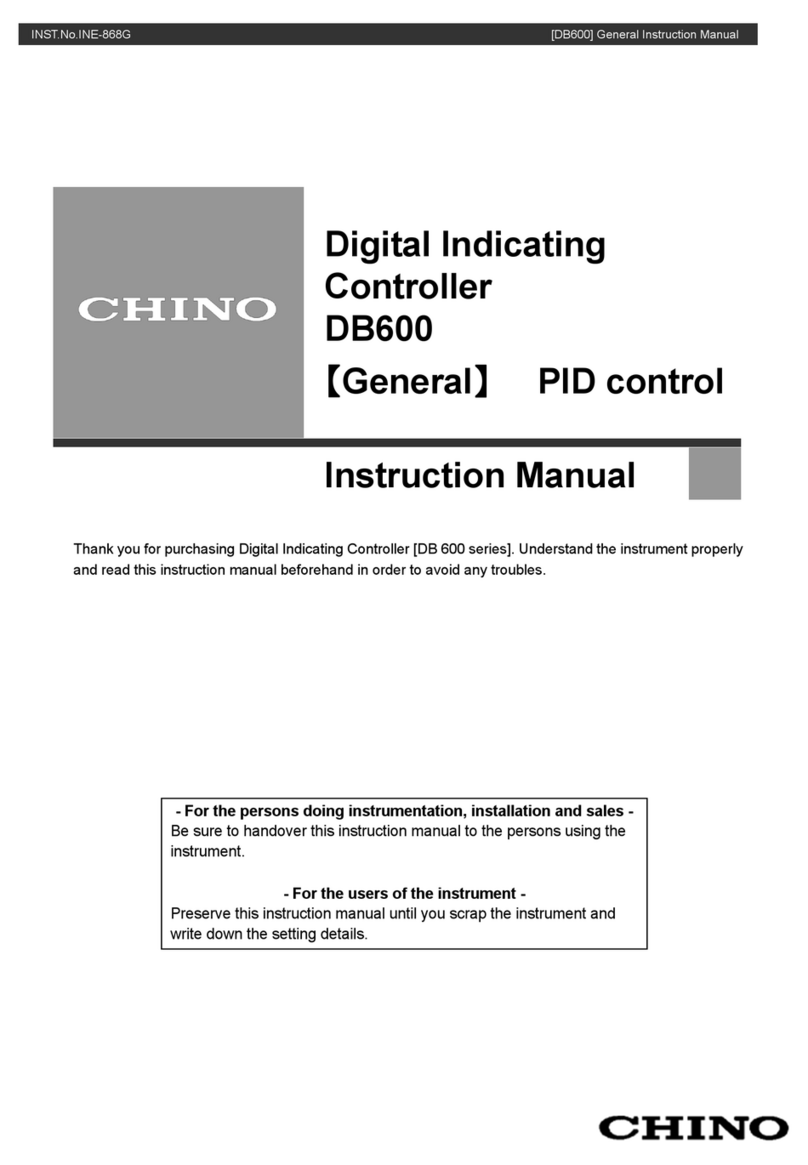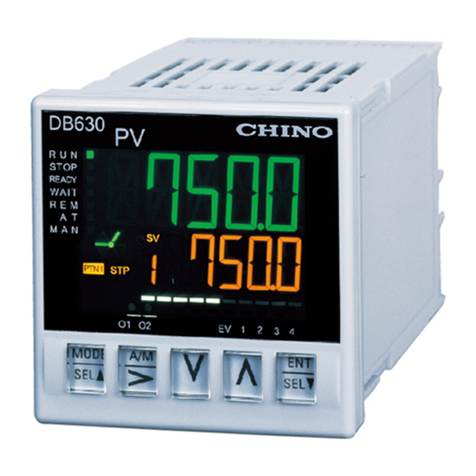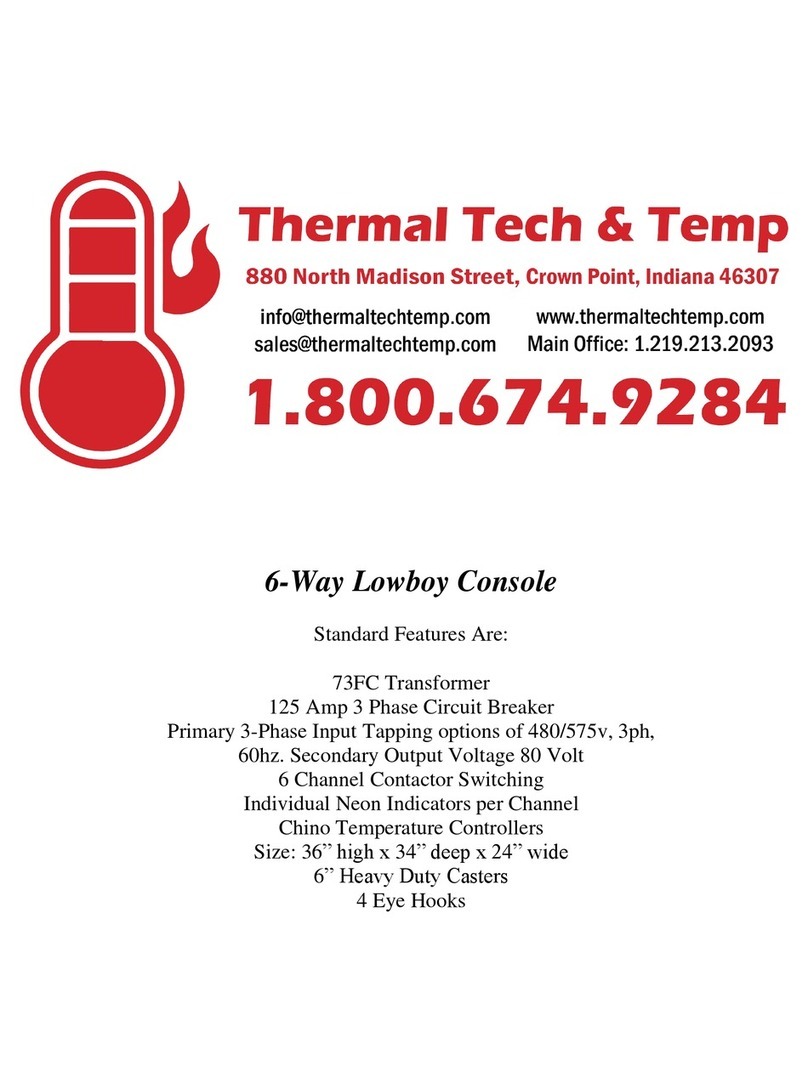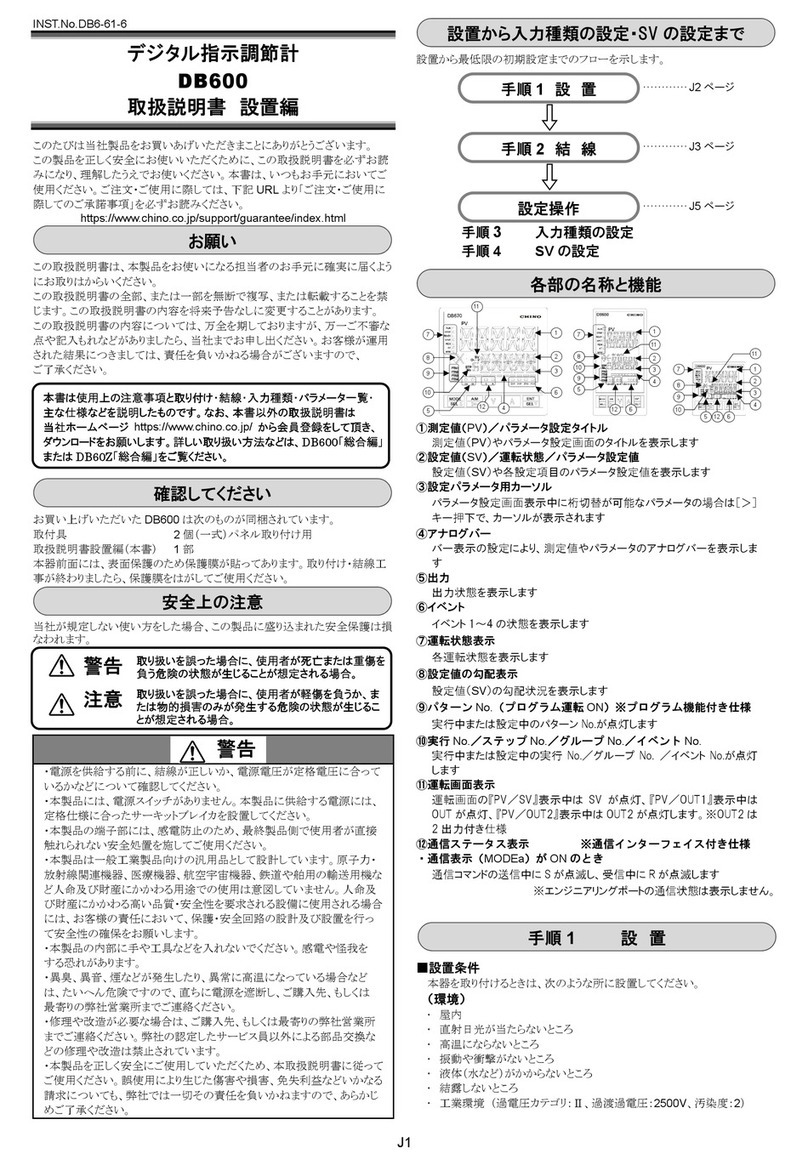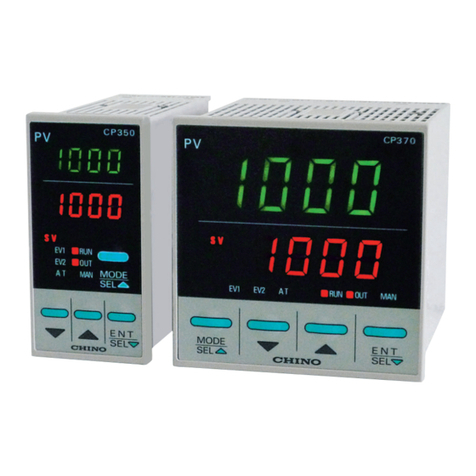
-2-
□
1OUTLINE
When these communication interfaces are added to the JW series communication setting unit, the setting of
parameters including the manual output, slope and elevation and information including the load voltage value,
current value, power value, resistance value and alarm can be collected from a master unit (PC, PLC, etc.). Two
communications interfaces, RS-422A and RS-485 are provided and can be selected by terminal connections.
The communication protocol employs MODBUS for easy configuration of a system with other instruments using
the same protocol.
1.1 RS-422A/485 Communication Interfaces
The RS-422A/485 communication interfaces allow multiple (up to 31) setting communication units and other
units to be connected to a same communication line.
When a PC is used as the master unit, it may sometimes be required to use an RS-232C ⇔RS-422A/485
signal converter. For this purpose, CHINO has a line converter (Model SC8-10) for RS-232C ⇔
RS-422A/485 signal conversion.
In the communication interfaces, the difference between RS-422A and RS-485 is that the RS-422A uses a
total of 4 lines composed of 2 lines for sending and 2 lines for receiving, and the RS-485 uses 2 signal lines
and switches sending and receiving.
1.2 Communication Protocol
The communication protocol is the MODBUS protocol. (MODBUS is a registered trademark of Schneider
Electric SA.)
The MODBUS protocol has the RTU and ASCII modes, which can be selected with the front function keys.
1.3 Communication Specifications
Communication type : Half-duplex asynchronous type
Communication protocol : MODBUS (RTU/ASCII)
Transmission rate : 9200 bps, 9600 bps
Start bit : 1-bit
Data length : 7-bit (ASCII mode)
: 8-bit (RTU mode/ASCII mode)
Parity bit : None/Even/Odd
Stop bit : 1-bit/2-bit
Communication code : ASCII (ASCII mode)
: Binary (RTU mode)
Error check : LRC (ASCII mode)
: CRC-16 (RTU mode)
: Parity

